Abstract
The electromyographic activity of flexors pollicis longus and brevis (with its synergists) has been compared on forcibly extending the thumb at various velocities with the muscles initially contracting. Both muscles gave short- and long-latency responses, but these differed in their relative magnitude with short-latency responses being better developed for the short flexor. With jerk-type stimuli both muscles gave short-latency responses with the expected slight difference in latency due to their different position in the arm. That of the long flexor was sometimes immediately followed by a long-latency response to the same stimulus. With slower displacements the short flexor regularly showed much more short-latency response than did the long flexor. The ensuing long-latency activity of the short flexor was normally appreciably less than that of the long flexor. However, since the short-latency response may be presumed to leave the motoneurones refractory it cannot be definitively concluded from this that acting in isolation long-latency pathways would be less potent for the short flexor, though this seems quite likely to be so. In some cases the first reflex activity occurred nearly synchronously for the two muscles in spite of their different separation from the spinal cord. That for the more distal short flexor was a short-latency response, whereas that for the more proximal long flexor was a long-latency response. The findings conflict with the provisional generalization that for muscles of the primate hand short-latency responses have been regularly supplanted by long-latency responses. They also provide the basis for a teleological argument against the view that the long-latency response is mediated transcortically.
Full text
PDF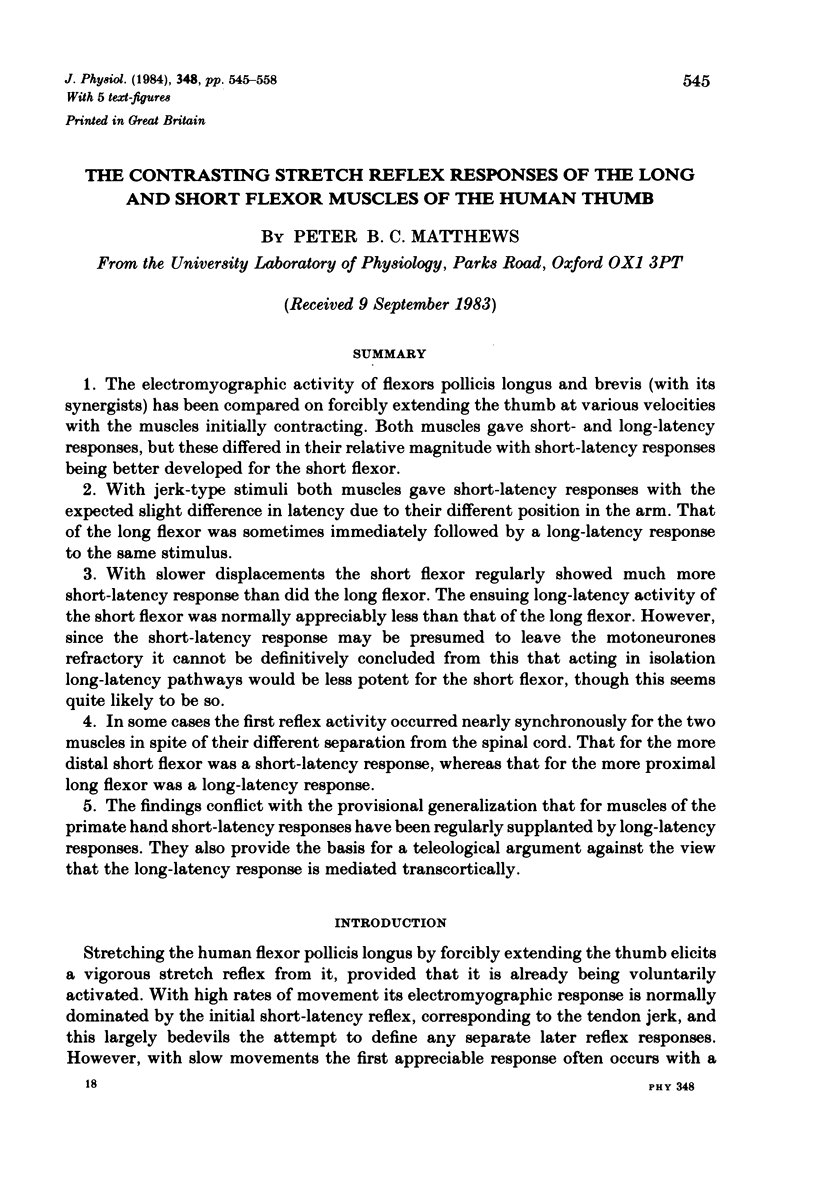
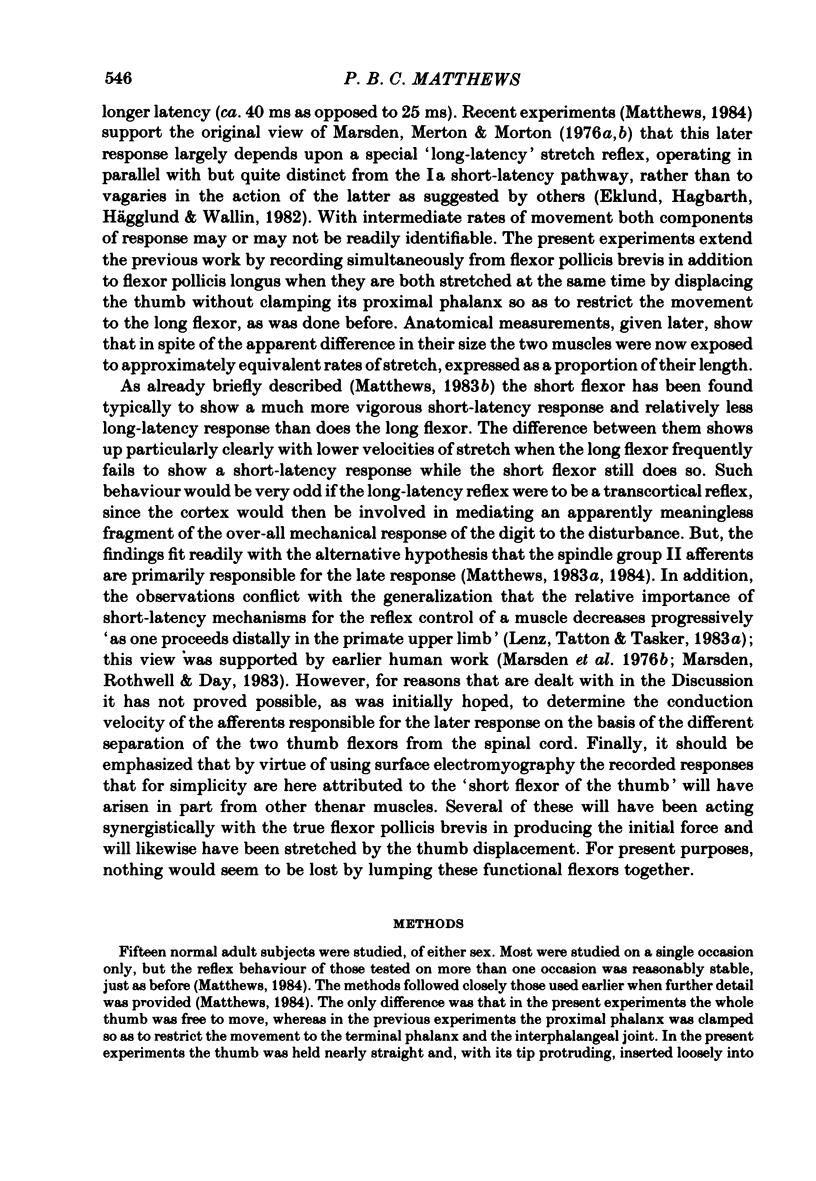
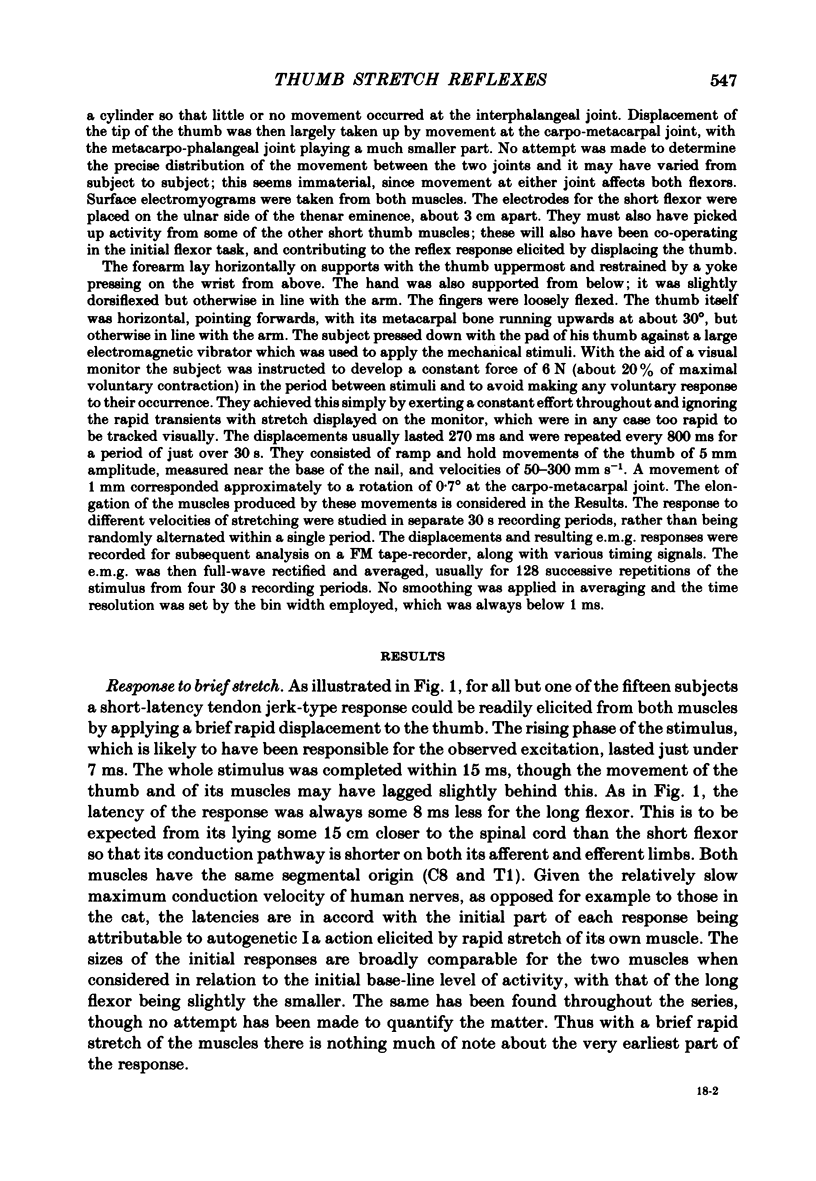
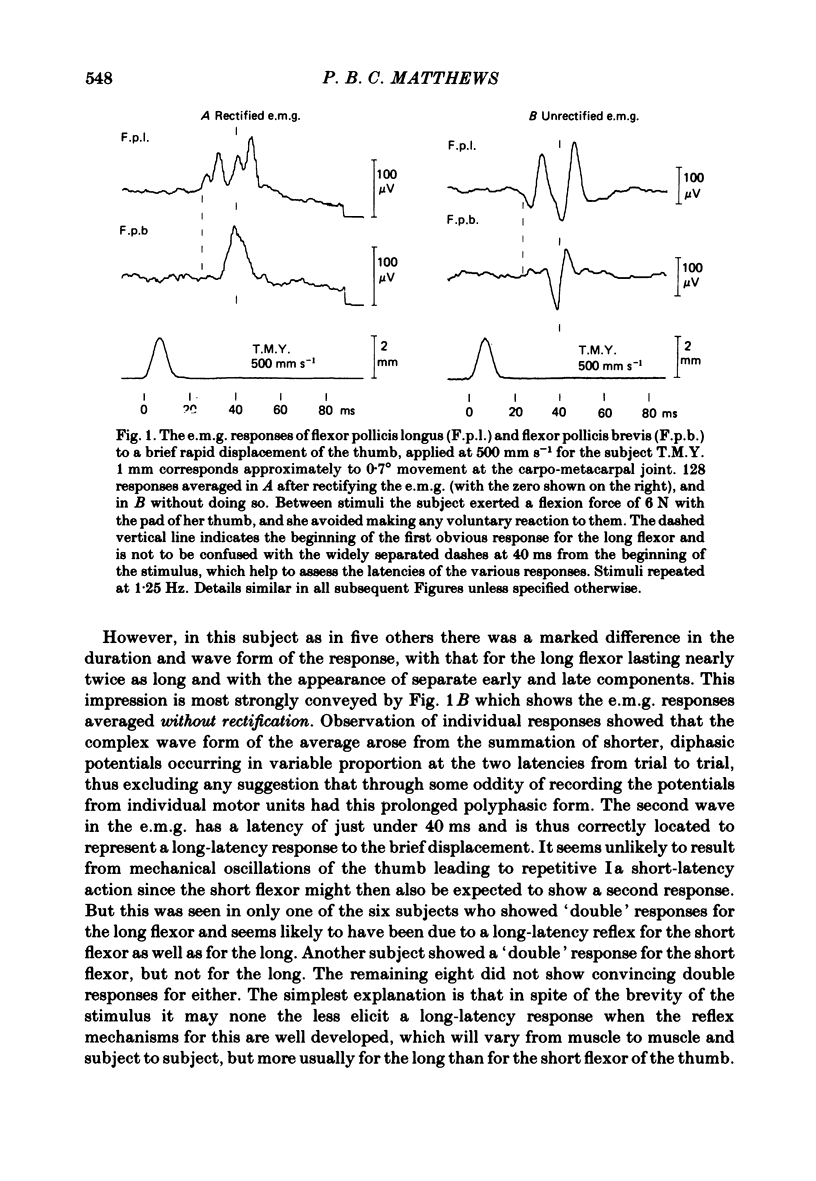
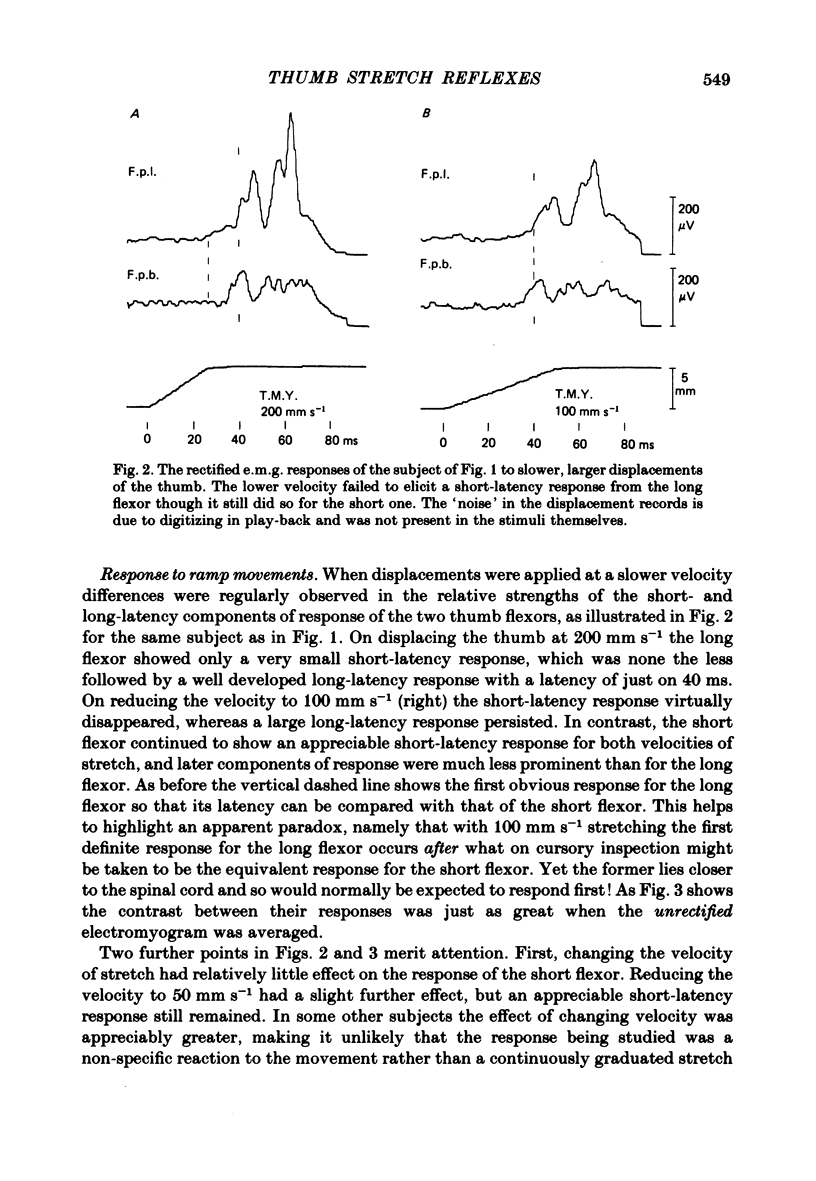
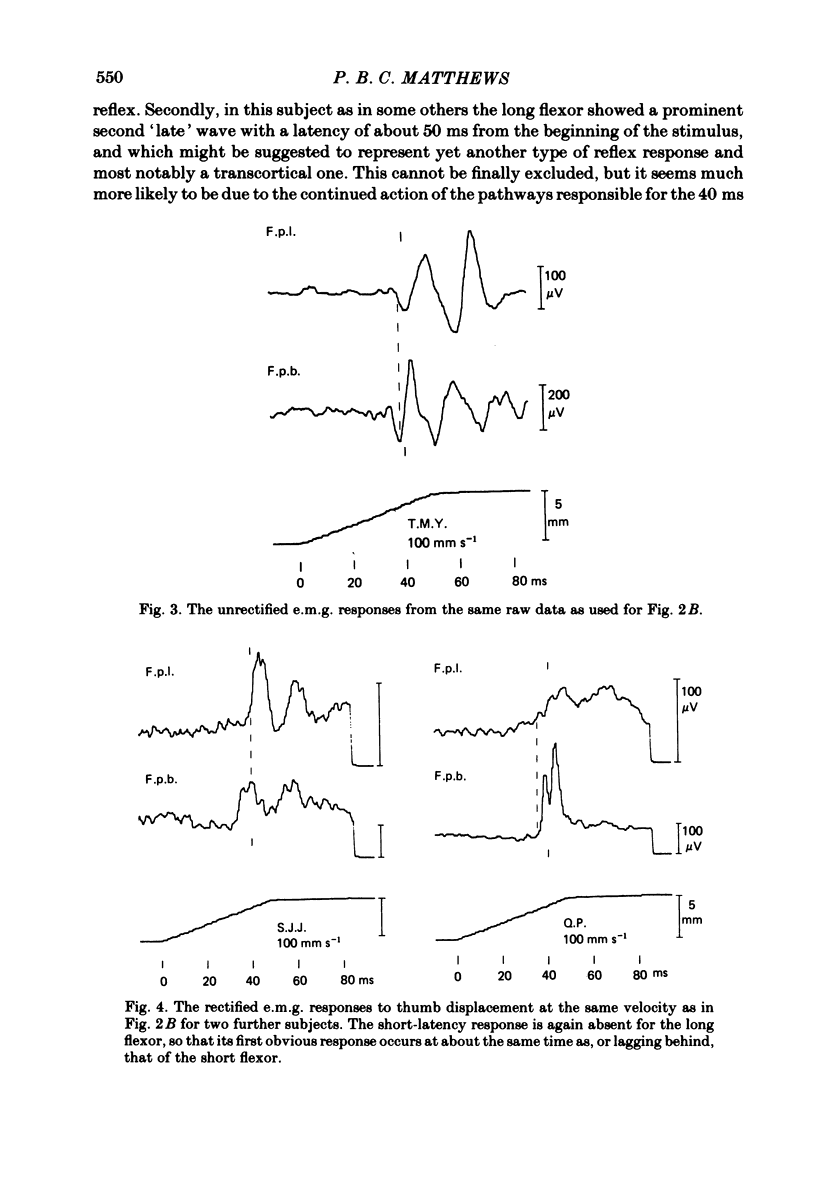


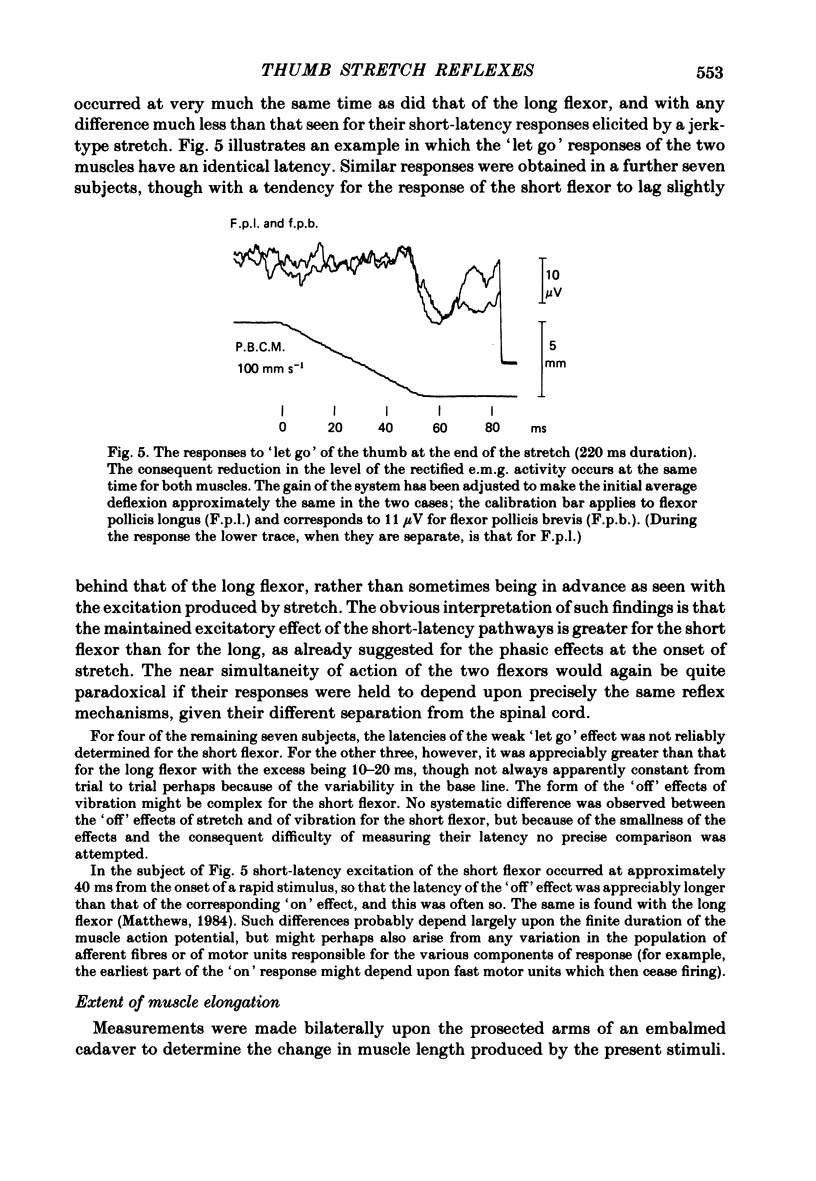
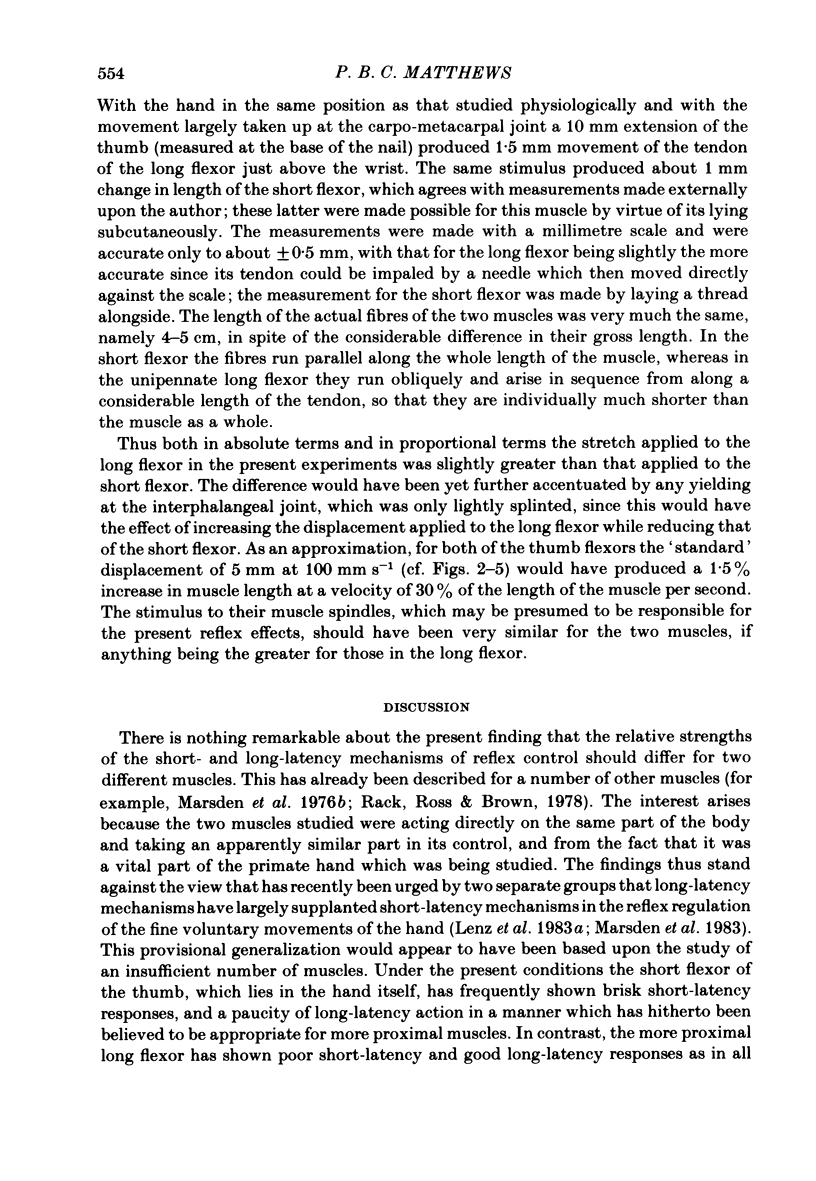
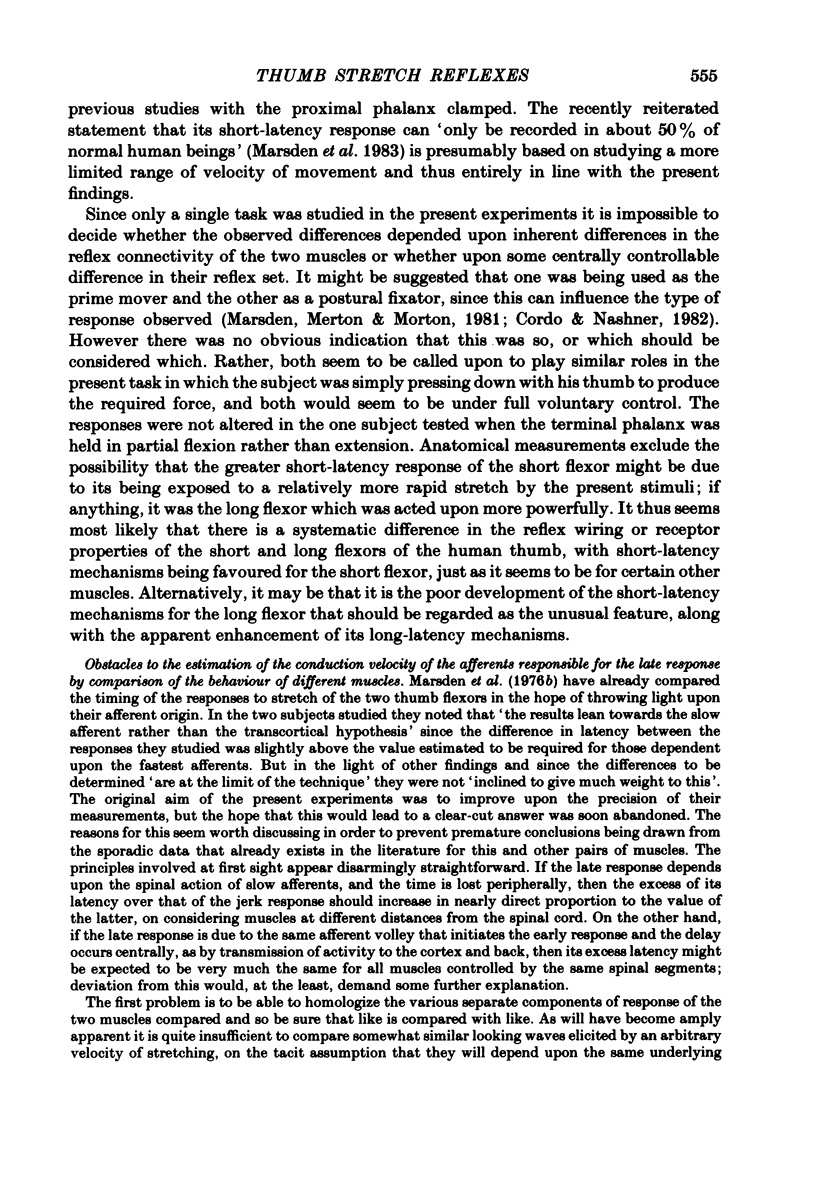
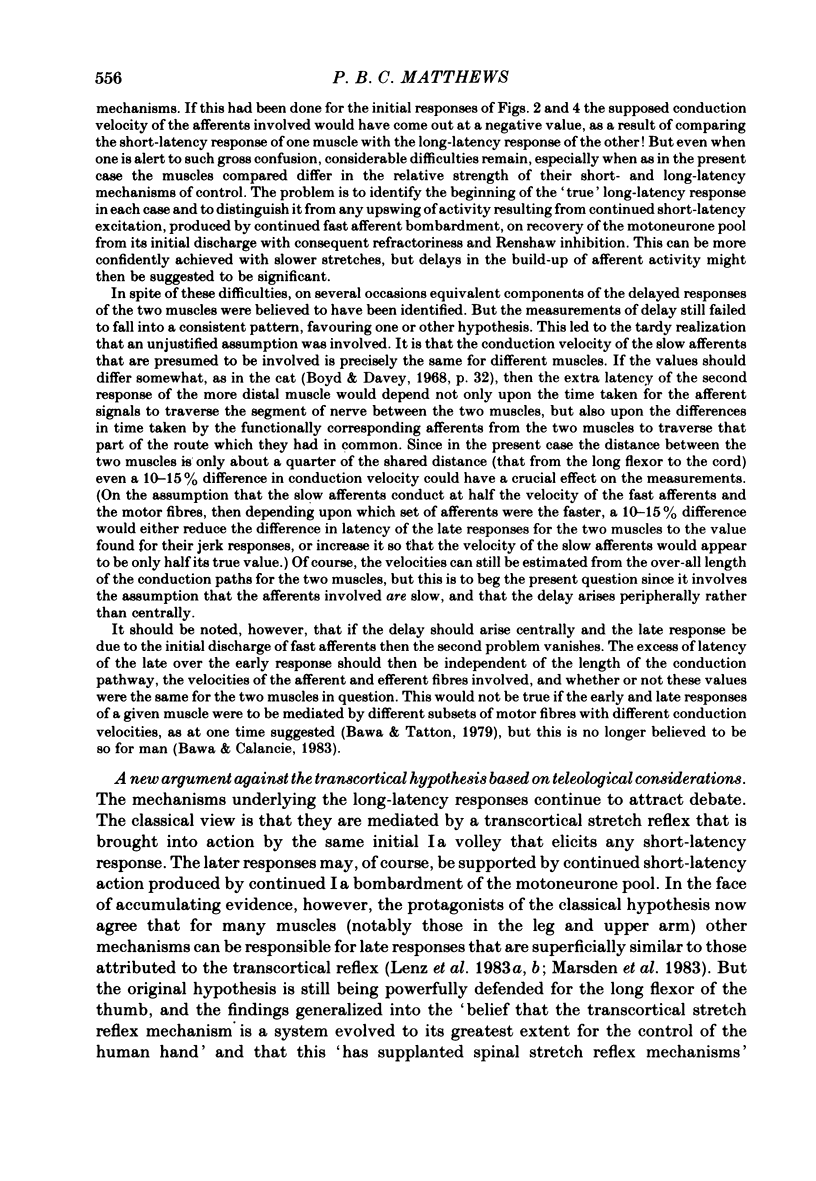
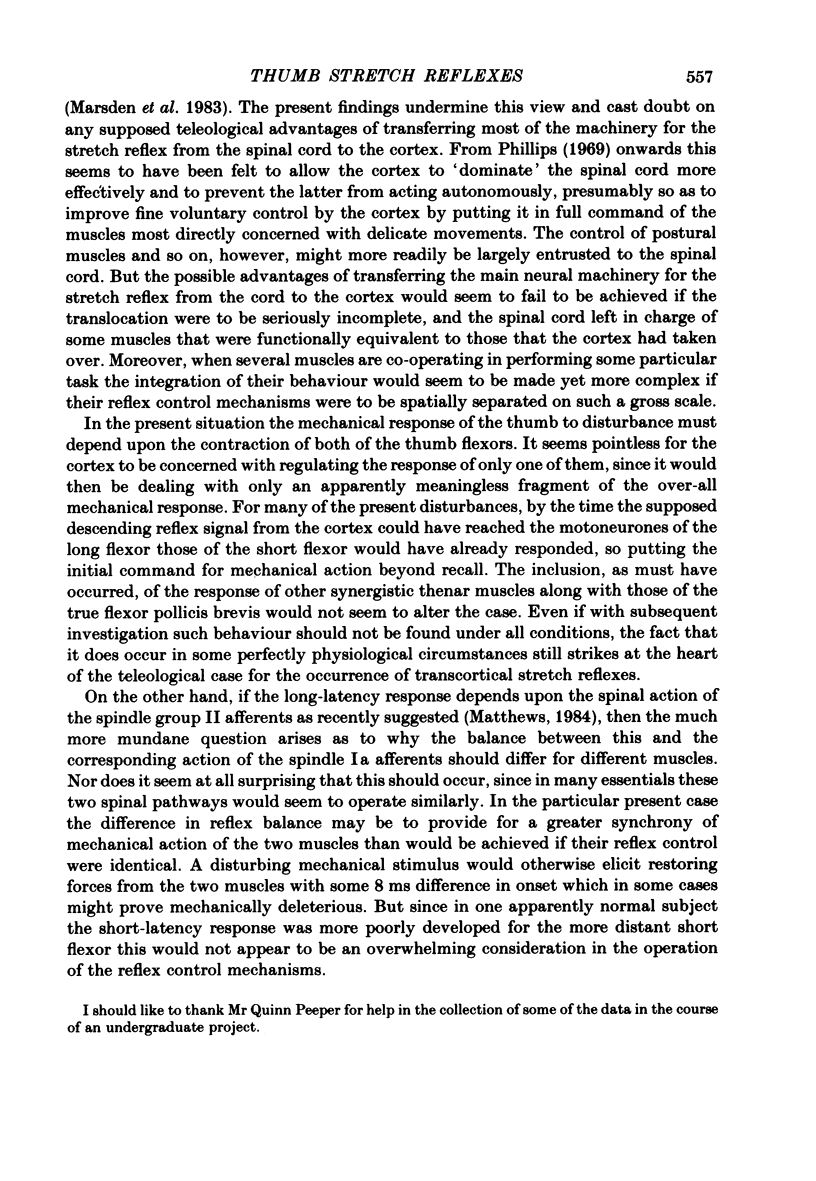
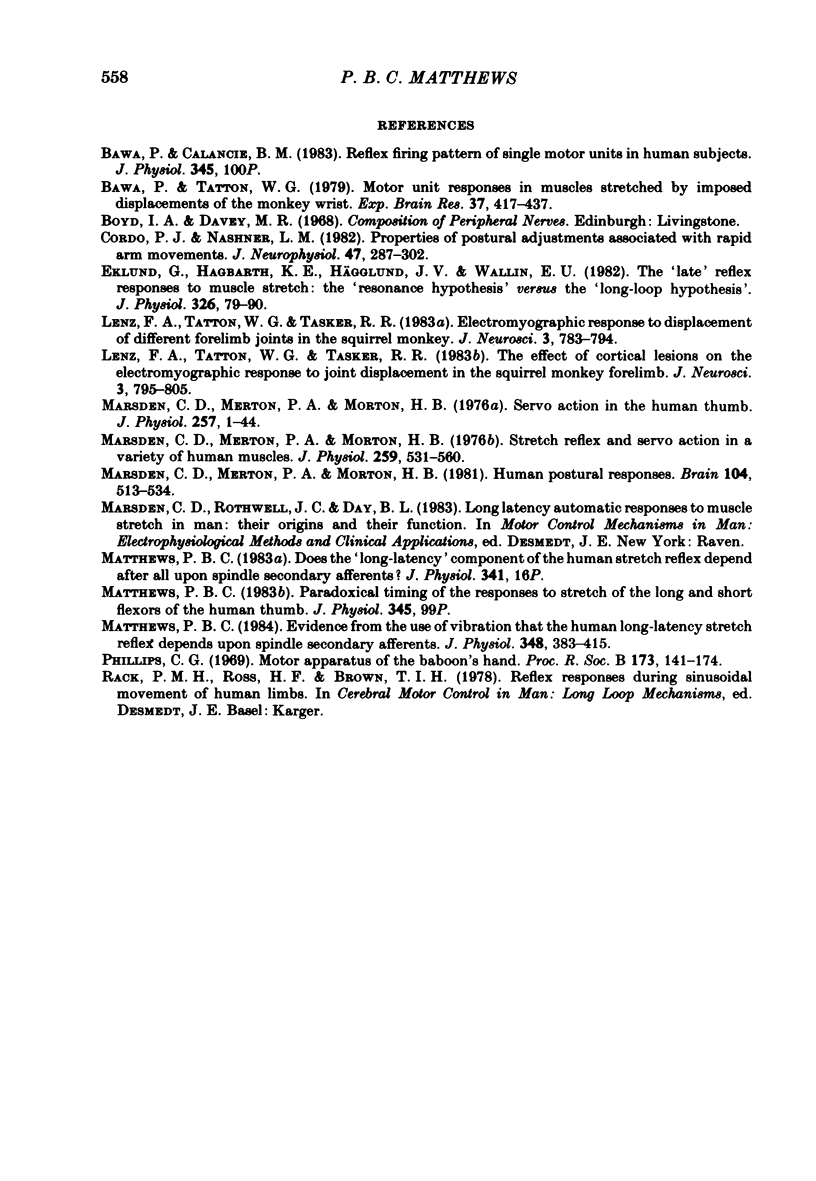
Selected References
These references are in PubMed. This may not be the complete list of references from this article.
- Bawa P., Tatton W. G. Motor unit responses in muscles stretched by imposed displacements of the monkey wrist. Exp Brain Res. 1979;37(3):417–437. doi: 10.1007/BF00236815. [DOI] [PubMed] [Google Scholar]
- Cordo P. J., Nashner L. M. Properties of postural adjustments associated with rapid arm movements. J Neurophysiol. 1982 Feb;47(2):287–302. doi: 10.1152/jn.1982.47.2.287. [DOI] [PubMed] [Google Scholar]
- Eklund G., Hagbarth K. E., Hägglund J. V., Wallin E. U. The 'late' reflex responses to muscle stretch: the 'resonance hypothesis' versus the 'long-loop hypothesis'. J Physiol. 1982 May;326:79–90. doi: 10.1113/jphysiol.1982.sp014178. [DOI] [PMC free article] [PubMed] [Google Scholar]
- Lenz F. A., Tatton W. G., Tasker R. R. Electromyographic response to displacement of different forelimb joints in the squirrel monkey. J Neurosci. 1983 Apr;3(4):783–794. doi: 10.1523/JNEUROSCI.03-04-00783.1983. [DOI] [PMC free article] [PubMed] [Google Scholar]
- Lenz F. A., Tatton W. G., Tasker R. R. The effect of cortical lesions on the electromyographic response to joint displacement in the squirrel monkey forelimb. J Neurosci. 1983 Apr;3(4):795–805. doi: 10.1523/JNEUROSCI.03-04-00795.1983. [DOI] [PMC free article] [PubMed] [Google Scholar]
- Marsden C. D., Merton P. A., Morton H. B. Human postural responses. Brain. 1981 Sep;104(3):513–534. doi: 10.1093/brain/104.3.513. [DOI] [PubMed] [Google Scholar]
- Marsden C. D., Merton P. A., Morton H. B. Servo action in the human thumb. J Physiol. 1976 May;257(1):1–44. doi: 10.1113/jphysiol.1976.sp011354. [DOI] [PMC free article] [PubMed] [Google Scholar]
- Marsden C. D., Merton P. A., Morton H. B. Stretch reflex and servo action in a variety of human muscles. J Physiol. 1976 Jul;259(2):531–560. doi: 10.1113/jphysiol.1976.sp011481. [DOI] [PMC free article] [PubMed] [Google Scholar]
- Matthews P. B. Evidence from the use of vibration that the human long-latency stretch reflex depends upon spindle secondary afferents. J Physiol. 1984 Mar;348:383–415. doi: 10.1113/jphysiol.1984.sp015116. [DOI] [PMC free article] [PubMed] [Google Scholar]


